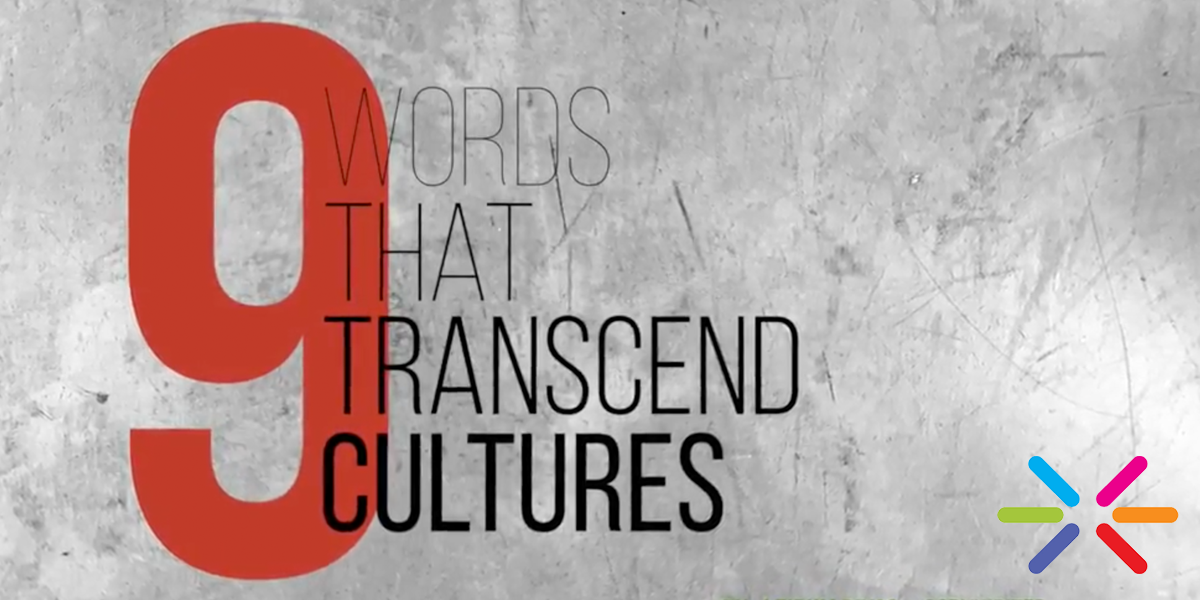
9 Words That Transcend Cultures
By Leirum Rivas, Copywriter & Video by Damian Balderrama, Jr. Art Director
Thanks to Social Media, our minds are fed with different languages every day. English may be in our default setting but content is free to speak “multicultural,” and the great thing is that we all understand it, no matter where we come from. Whether we see memes, videos or GIF’s, all this universe of social content speaks a universal language and, if it catches our eye, we will enjoy it!
We are constantly exposed to different words which open our minds to a “no borders” territory. Many of the words have become part of our everyday vocabulary, especially when it comes to food. Others we for granted just because they’re so familiar to us.
As a copywriter, I have a passion for words, so here are a few which I feel transcend borders:
Coffee
We all can tell when coffee is brewing, that eye-opening aroma. But did you know this word is recognized in more than 8 widely spoken languages? And it comes from the Arabic word qahwa.
Metro
This word has the same meaning and almost same pronunciation in Portuguese, Spanish, Arabic, Finnish, Basque, French, English and Hungarian.
Photo
The verb “photograph” is very similar in different languages: fotografirovat in Russian, photographier in French, fotografiar in Spanish, fotografovat in Czech. And photo is recognized in over 11 languages.
Mama / Papa
The similarity of these words in different languages comes from the fact that they are the first word-like sounds that babies learn. The word mom, although written and spoken with variations around the world, still sounds similar: mamá, mama, mami, maa, mama.
Ok
This word is frequently used and recognized in most countries, even with its variations: okéj, oke, ukey, okey, ōukēi. The neutral nature of this word serves to agree or affirm without a further explanation, fitting perfectly in any language.
Chocolate
Although this word has many variations: chokoreto, côkôleţ, qiǎokèlì, cākalēṭa, coklēṭ, etc. it is universally recognized.
Tea
Speaking of universal, “tea” also tops the list! Next time you order tea you’ll most likely be understood in the 10 most widely spoken languages. Did you know it derives from the words tê in Min Nan and chá in Mandarin? The next time you travel and ask for tea, you will likely discover the word they use in each country of origin, it either resembles chá or tê. Examples: shai, té, te, thee, the, tee, tsai, téi, ceai.
Pizza
This culture-specific word has crossed the borders despite the fact that it’s written and pronounced in a variety of ways: bǐsà-bǐng, biitza, pitstsa, pizā and pijā.
Shampoo
As weird as it may sound, this is another very recognizable word worldwide. The root comes from the Hindi word campo/champo.
Huh?
Funny enough, there’s one word claimed to be the most universal: Huh.
This affirmation is done after analyzing 31 languages, and curiously, linguist N.J. Enfield adds, “Huh does not stand for universal confusion,” he writes, “it stands for universal cooperation. It shows that there is a global need, and willingness, to pause a conversation and sort out a communication problem as it occurs.” Juliana Labianca – Reader’s Digest
Can your brand speak multicultural?
As expressed above, words and languages cross borders and even mix themselves, giving a unique storytelling style or personality to your brand, and allowing you to speak more creatively to a specific audience. Think interlanguages like Spanglish (Spanish and English) or Portunhol (Portuguese and Spanish).
On your next Social Media campaign, can your brand customize its language to transcend cultures? Could you tell a greater story when using language in an engaging and relevant way?
At Dieste we are always looking for our brands to speak in a creative and unique way. Be sure to subscribe to Provoke Weekly to learn more about the ever-changing America.
Leirum is a Venezuelan-boricuan copywriter and innate storyteller. She’s a bookworm who started her career in the world of literature, and then worked her way into advertising.
Damian is Costa Rican-Mexican-American Jr. Art Director. He enjoys watching countless top ten YouTube videos, especially about mysteries. Quotes Will & Grace quite a lot, collects Living Dead Dolls, and likes to do artsy DIYs as a hobby. Oh and one more thing: “Will & Grace, season 5, episode 15, minute 14:50”.




